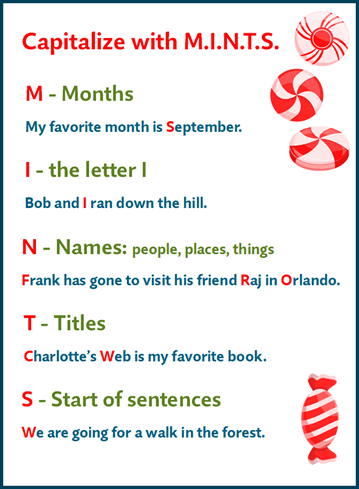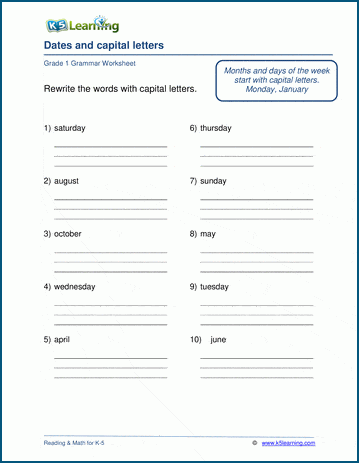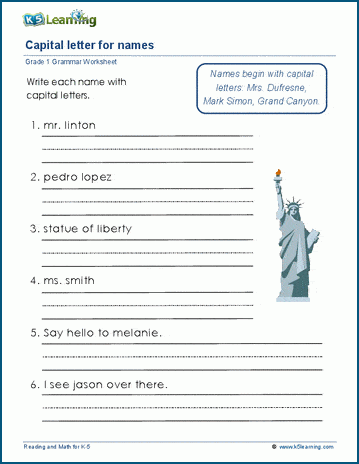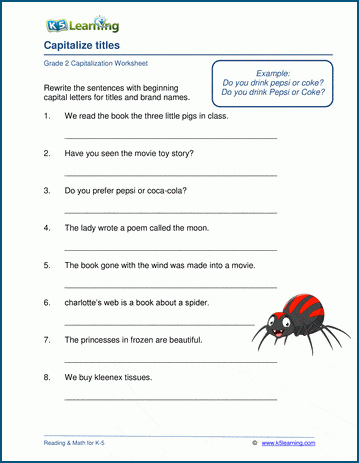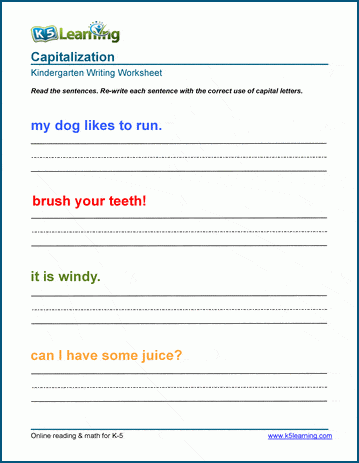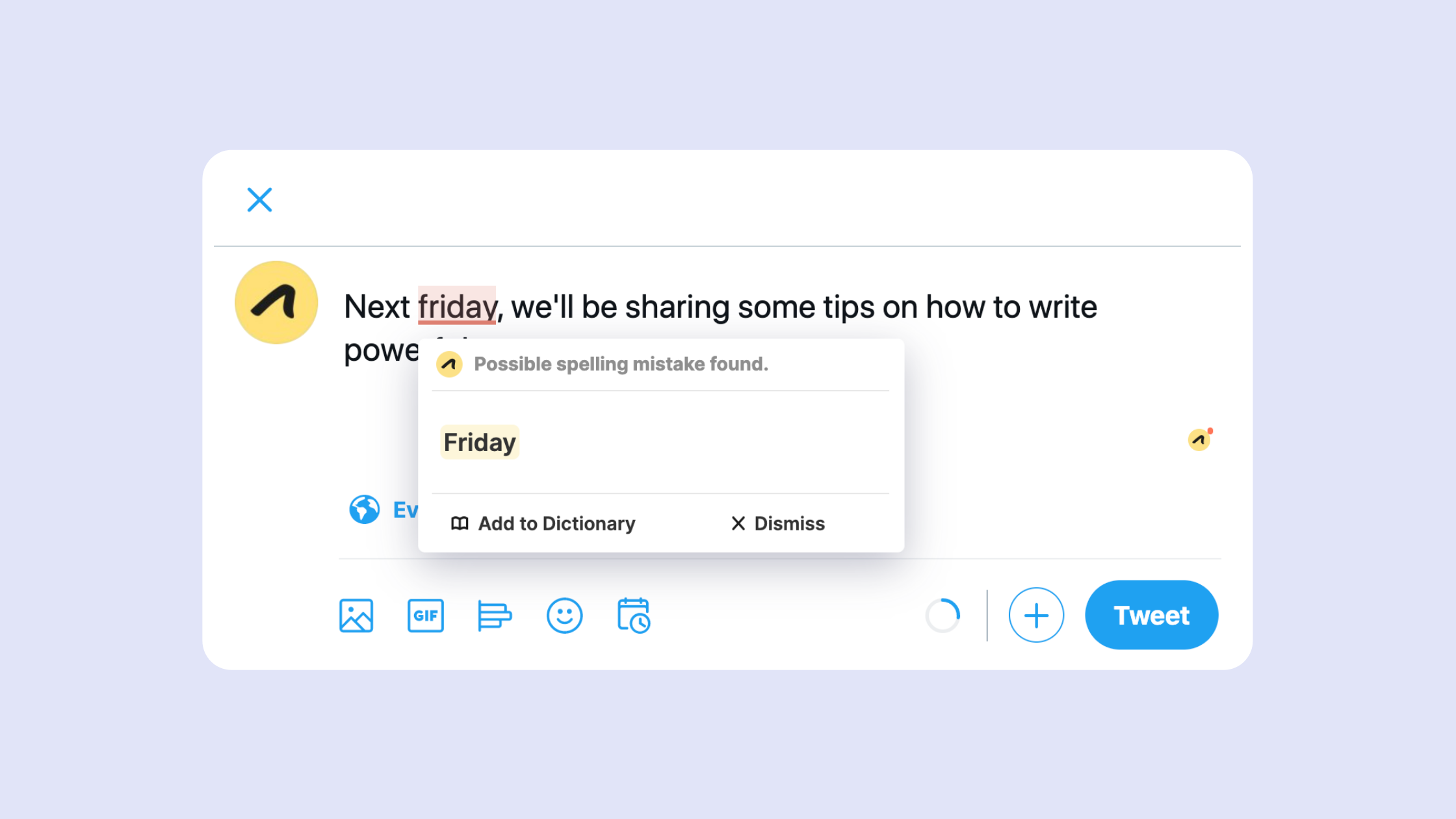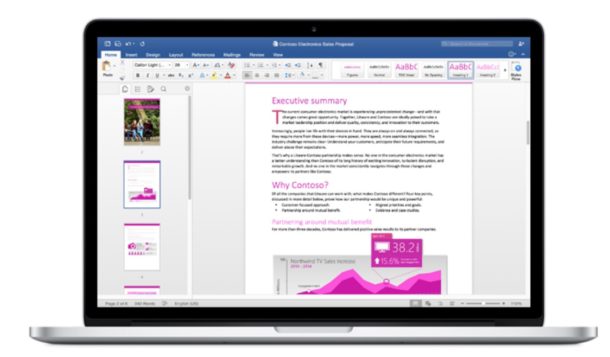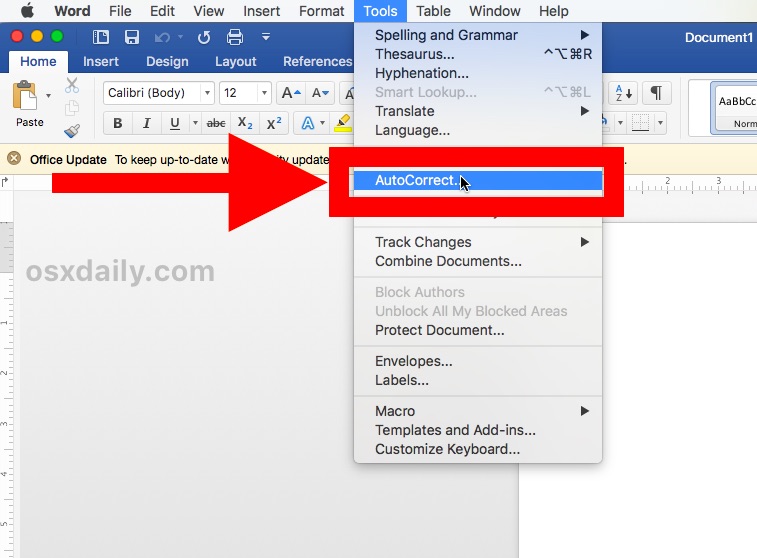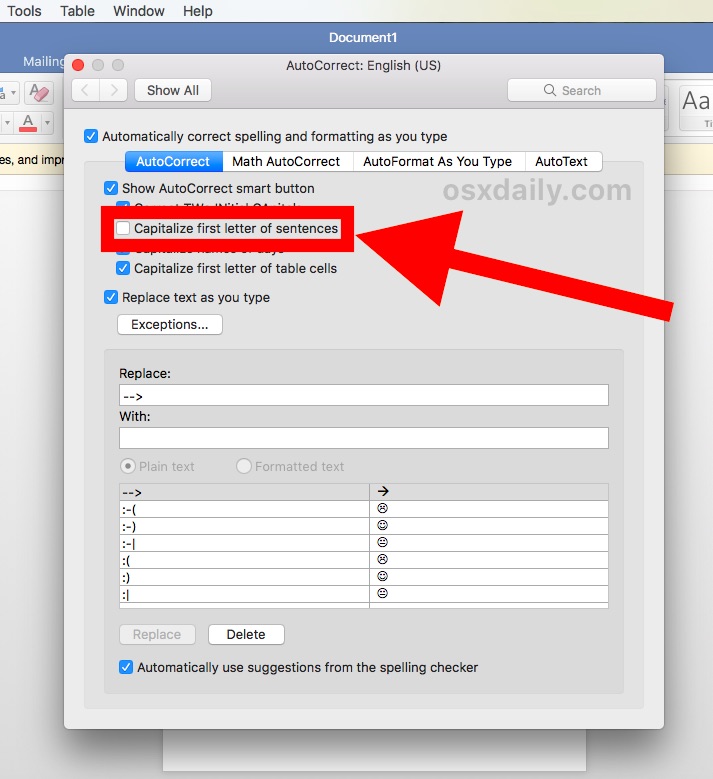Introduction
When you want to write something (like an article, letter, CV, etc) in the English Language, you will make sure that it is meaningful and error-free, but it’s obvious that you make a lot of mistakes in Grammar.
Grammar errors like spelling, prepositions, sentence structure & formation, etc are common while writing.
So as we know that every language has its own grammar, we are going to explain these 12 rules of Grammar to avoid those errors and write well.
Also Read: What is Grammar? | (Grammar definition, rules & examples) | Best Guide 2021
Here are some sets of rules that you need to follow in order to avoid mistakes in English grammar.
Rule 1: Every sentence should start with a Capital letter in the first word.
In the English Language, when you are starting a sentence, then make sure that you capitalize the first letter of the first word. Also, remember that you need to capitalize even when you start a new paragraph.
Example Statements:
- Incorrect: my best friend’s name is Rohan. he is a good boy. (X)
- Correct: My best friend’s name is Rohan. He is a good boy. (_/)
- Incorrect: i live in Mumbai. it is a wonderful place. (X)
- Correct: I live in Mumbai. It is a wonderful place. (_/)
Rule 2: Every sentence should either end with a full stop (or) a question mark (or) an exclamation mark.
If you want to end a sentence, then make sure that you need to use a full stop (.), a question mark (?) or an exclamation mark (!) based on the type of the sentence.
The above, any of the three mentioned should be used depending on the situation of the sentence. For example, let us consider a few examples with its usages (purpose).
1) Full Stop/Period (.):
Here, the full stop is used when a sentence completes a proper message (meaning). The symbol used for the full stop is (.).
Example Statements:
- John loves to play football. He dreams to become a football player.
- I am living in London for 2 years.
- I purchased a new car. It is very expensive.
2) Question Mark (?):
Question marks are used only for questioning (or) interrogating sentences. It is used at the end of the sentence, to make it questionable. The symbol used for questioning is “?”.
Example Statements:
- Which college are you studying from?
- Do you know who I am?
- Where do you live?
- Are you still playing these old games?
- Do you know how to swim?
3) Exclamation Mark (!):
An Exclamation Mark is used when you are expressing your feelings or emotions. So, when you are expressing it in a sentence, you need to remember that exclamation should be done at the end.
The symbol which is used for the sentence is “!”.
Example Statements:
- She actually won the lottery!
- Wow, such a wonderful place it is!
- You are late again!
- You did a great job!
Rule 3: Every sentence should have SVO (Subject – Verb – Object).
The basic rule of grammar in the English Language is that you must include Subject and Verb. The object is optional depending on the usage.
This order is only applicable for positive sentences, not for sentences with negatives or question marks (?) or exclamation marks (!) because they may have different orders.
The Subject usually plays a major role in the entire sentence. It helps you to give an idea of who is performing an action, who is talking to whom, etc.
The verb is usually the action which is performed by the Subject, and the object is usually on which the action is performed.
Sometimes, a few sentences don’t mention the subject. Actually, it has a subject, and it is understood even if it is not shown. For example, consider the word “Stop!” – which means that you must stop (here “you” is hidden).
Example Statements:
- Mary loves to play with cats. (S – Mary, V – play, O – cats)
- Michael teaches French. (S – Michael, V – teaches, O – French)
- We are planning to visit Singapore. (S – We, V – planning, O – Singapore)
- I am happy. (S – I, V – am, O – happy)
- Come here! (It means – “You come here!”) (Here, the subject is hidden)
Rule 4: The Subject and Verb forms are interrelated in the sentence.
If you are using a singular Subject, then you need to use a singular Verb for the whole sentence and if you want to use a Plural subject, then you must use a plural verb.
If you are using he/she/it as a Subject, then use its corresponding verb and when using we/they/I/you, then use its verb.
Example Statements:
- Harry wants to buy a new bike.
- We are going to a restaurant this weekend.
- We don’t like to go to the library.
- They are watching a football match on TV.
- She likes to stay in London.
- They want to have coffee this evening.
Rule 5: Use Either – or (or) Neither – nor depending on the Sentence while using singular nouns.
In English sentences, Either – or and Neither – nor is used when two singular nouns are connected. These two are different in usage. Also, remember that the singular verb is used for singular nouns.
Either – or:
Either – or is used when any one of the two cases is true. This means that either this must be true or that.
Example Statements:
- Raju and Srikanth must be either friends or enemies.
- I want either Tea or Coffee.
- I think either Team A or Team B will win this match.
Neither – or:
Neither – or is used when two of the (subject) cases are false. This means that both are false.
Example Statements:
- Neither I nor you broke the vase.
- Neither John nor Mike are late today.
- Neither I nor you must win this game.
Rule 6: Proper Nouns should be capitalized anywhere in the sentences (including at the beginning) when used.
It is important to capitalize on the words which are Proper Nouns. This can be at the beginning, middle and end of the sentences (in short, anywhere in the sentence).
Example Statements:
- I love to drink coffee at Starbucks.
- I will eat only high-protein foods.
- I have final exams from tomorrow.
- Mount Everest is the highest mountain located in Nepal.
Rule 7: Common Nouns should be capitalized only at the beginning of the sentences.
When common nouns are used, then you need to capitalize them only at the beginning of the sentences.
Example Statements:
- I have beautiful flowers in my garden.
- I love to read books in the library.
- My school is located near the railway station.
- Tina went to a supermarket to buy groceries.
Rule 8: The words its – it’s, and you’re – your are not the same.
Some words in the English Language look like they are the same, but they have different meanings. Now let us take some examples to understand the concept well.
Here, the main difference between its and it’s is,
- its: It is a Possessive determiner and used to say that it belongs (holds or refers to) something.
- it’s: Here “it’s” is the short form of “it is” and is used to mention things.
Example Statements (for its):
- This fish is too big for its aquarium.
- This bread has passed its expiration date.
- The dog has hurt its tail.
Example Statements (for it’s):
- It’s taking so much time to prepare this presentation.
- It’s always raining here.
- It’s good to know the current politics of your area.
- It’s been a wonderful day!
Rule 9: Use Indefinite Articles for Countable Nouns and Definite with specific Countable & all Uncountable Nouns.
The Indefinite Articles (a/an) are used mostly for Countable nouns. Definite Articles (the) are used for a few Countable nouns and mostly for Uncountable nouns.
Example Statements:
- I saw an eagle which is flying very high in the sky.
- The principal asked a student about his performance.
- Arun is a brilliant student in the class.
- An apple a day keeps the doctor away.
- Hari is a good boy. He likes to help others.
- I want to buy an iPhone this month.
Rule 10: Use the article “a” for Consonant sounds and “an” for vowel sounds.
Use the article “a” for the words which sound Consonant at the very beginning. For example, consider the below table.
|
Consonant Sounded Words |
With Article (a) |
|
bat |
a bat |
|
cat |
a cat |
|
dog |
a dog |
|
fish |
a fish |
|
gun |
a gun |
|
hat |
a hat |
|
jug |
a jug |
|
kite |
a kite |
|
lemon |
a lemon |
|
mat |
a mat |
Use the article “an” for the words which sound Vowel at the very beginning. For example, consider the below table.
|
Vowel Sounded Words |
With Article (an) |
|
apple |
an apple |
|
eagle |
an eagle |
|
elephant |
an elephant |
|
orange |
an orange |
|
umbrella |
an umbrella |
|
igloo |
an igloo |
|
apron |
an apron |
Note: When you’re using “a” or “an” then make to focus on pronunciation rather than the word’s spelling. Few words look like consonants, but it actually pronounces like vowels. For example, “an hour”.
If you want to read more about Articles, then click on the button below or read from the suggestion link.
Also Read: What are Articles in English Grammar? | (with easy examples)
Rule 11: Use Apostrophe to show Possessions.
Possession is something which is usually owned by a person, place, thing, etc. It has two forms, which are Singular and Plural.
For Singular use (-‘s) and for plural use (-s’).
Example Statements:
- Boy’s car (Singular)
- Boys’ car (Plural)
- Raju’s car got damaged last night.
- Ravi’s friend came to Europe to visit Ravi.
Also Read: What is a Possessive Noun? (with examples) | Best Guide 2021
Rule 12: Active voice is more preferred than Passive voice in the English Language.
Most of them recommend writing Active voice rather than Passive voice while writing articles, letters, etc.
In simple terms, an Active voice is a sentence in which the subject performs an action (verb). Whereas in Passive Voice, the Verb (action) is displayed first and then the Subject.
Example Statements:
- Passive Voice: Football was played by Raju.
- Active Voice: Raju plays football.
Click the below button to learn about Active and Passive Voice in detail.
Quiz Time! (Test Your Knowledge Here)
#1. He can have _______ a pizza _____ a burger.
either, or
either, or
or, or
or, or
either, nor
either, nor
none
none
Answer: He can have either a pizza or a burger.
#2. Which word is wrong in the sentence, «Tina want to buy a new house.»
want
want
new
new
buy
buy
a
a
Answer: Tina wants to buy a new house. Here “wants” should be used because the subject (Tina) is singular.
#3. I usually order pizza from Dominos. Identify the Proper Noun (P) and Common Noun (C).
P: pizza, C: pizza
P: pizza, C: pizza
P: pizza, C: Dominos
P: pizza, C: Dominos
P: Dominos, C: pizza
P: Dominos, C: pizza
P: Dominos, C: Dominos
P: Dominos, C: Dominos
Answer: Proper Noun is Dominos and Common Noun is Pizza.
#4. Passive voice is considered more than Active voice. Is it true?
false
false
none
none
true
true
can’t say
can’t say
Answer: It is false.
#5. Correct the given sentence, «do you know where I live»
Answer: Do you know where I live?
#6. Which article is used for hour?
a
a
an
an
both
both
none
none
Answer: Here “an” article is used because the letter “h” is silent and sounds like a vowel (like our).
#7. Correct and rewrite the sentence, «he is a lazy person and doesn’t complete his work on time»
Answer: He is a lazy person and doesn’t complete his work on time.
#8. Rewrite the given sentence, «today, Raju has purchased a new car he is very excited about it»
Answer: Today, Raju has purchased a new car. He is very excited about it.
#9. «Raju car is not working properly.» — Rewrite the sentence with Possession.
Answer: Raju’s car is not working properly.
#10. Correct the Possession for the given sentence, «Todays temperature is very high.»
Answer: Today’s temperature is very high.
Results
—
Hurray….. You have passed this test! 🙂
Congratulations on completing the quiz. We are happy that you have understood this topic very well.
If you want to try again, you can start this quiz by refreshing the page.
Otherwise, you can visit the next topic 🙂
Oh, sorry about that. You didn’t pass this test! 🙁
Please read the topic carefully and try again.
Summary: (12 Rules of Grammar)
If you want to write better in the English Language, then you need to focus on these 12 Rules of Grammar, which I have mentioned above.
The 12 Rules of Grammar are:
- Every sentence should start with a Capital letter in the first word.
- Every sentence should either end with a full stop (or) a question mark (or) an exclamation mark.
- Every sentence should have SVO (Subject – Verb – Object).
- The Subject and Verb forms are interrelated in the sentence.
- Use Either – or (or) Neither – nor, depending on the Sentence, while using singular nouns.
- Proper Nouns should be capitalized anywhere in the sentences (including at the beginning) when used.
- Common Nouns should be capitalized only at the beginning of the sentences.
- The words its – it“a”’s, and you’re – your not the same.
- Use Indefinite Articles for Countable Nouns and Definite with specific Countable & all Uncountable Nouns.
- Use the article “a” for Consonant sounds and “an” for vowel sounds.
- Use apostrophes to show Possessions.
- Active voice is more preferred than Passive voice in the English Language.
Also Read: What is Grammar? | (Grammar definition, rules & examples) | Best Guide 2021
If you are interested to learn more, then you can refer to Wikipedia here.
I hope that you understood the topic “12 Rules of Grammar”. If you have any doubts regarding this topic, then comment down below, and we will respond to your questions as soon as possible. Thank You.
When To Use Capital Letters
powered by
LanguageTool
Some English capitalization rules are rigid, but others are a matter of style. We’ll go over the most common “capitalization” guidelines.
- Capitalization is when certain letters are written in uppercase instead of lowercase.
- There are several rules to keep in mind when deciding when to use capital letters.
- ○ Mrs. Johnson states that our homework assignments are due every week on Friday.
The rules of capitalization in English may seem pretty direct. For example, most people know to capitalize the first letter of every sentence and the personal pronoun “I.” There are some gray areas, though. Should sentences after colons begin with a capital letter, too? How about titles and headlines? We’ll answer these questions and go over some basic guidelines for capitalization.
1. “Capitalizing” the First Word of a Sentence
This one is first because it’s the most common and straightforward rule: The first letter of a sentence must always be capitalized. A capital letter shows the reader that a new sentence has begun, the same way a period shows that a sentence has ended.
Yesterday I visited my grandma. We went to the mall, the movies, and then dinner. Afterwards, I dropped her back off at home. It was truly a great time.
Direct quotes within a sentence should also be capitalized:
She was so excited, I remember her saying, “This is the most fun I’ve had in a long time.”
However, if the quote is a phrase or sentence fragment, then it does not need to be capitalized.
I told her “not to worry,” because I’d be coming to visit more often now that we live in the same state.
2. “Capitalizing” Proper Nouns
Proper nouns are always capitalized. These are words that identify individual or unique nouns, unlike common nouns (which identify general or nonspecific nouns). Proper nouns include names of people, places, events, companies, and organizations.
Josiah and I visited Disney World. We took pictures with Mickey Mouse, Pluto, and Donald Duck. On the last day, when we met with Samuel and Jason and went to Animal Kingdom, Josiah accidentally spilled a Pepsi drink all over me.
How about titles like uncle, mom, and grandpa? When they immediately precede a proper name, then the first letters of those words should be capitalized. When they’re used in place of a personal name, they should also start with a capital letter.
I was surprised to see Uncle John at my graduation.
Uh-oh! Wait until Mom sees this.
However, if these titles are preceded by a possessive pronoun, noun, or article, if they follow a personal name, or if they don’t refer to a specific person, then they do not need to be capitalized.
My dad will not be happy that no other fathers helped with the fundraising event.
Because specific days, months, and holidays are proper nouns, they also have to be capitalized.
Every Friday during the month of November, my mom goes shopping for Christmas gifts.
Keep in mind that proper adjectives should be capitalized, too.
Bonus Tip
LanguageTool is a multilingual text editor that can correct any mistakes in capitalization, even in proper nouns. Additionally, this writing assistant can also fix grammar and spelling errors and easily provide synonyms that’ll strengthen your writing. Try it out.
3. “Capitalizing” Titles in Names
An additional, identifying name or title, like Dr. Strange or Mr. Bean, are always capitalized.
Professor Acosta had a guest speaker for today’s lecture.
President Joe Biden was nominated by the Democratic Party.
Mrs. Davis is a favorite among the students.
4. “Capitalizing” Titles and Headlines
Capitalizing titles differs depending on the style guide. However, the most common rule is this: Nouns, pronouns, verbs, adjectives, and adverbs should be capitalized. Prepositions, articles, and conjunctions should be left in lowercase (unless they are the first word).
The Chronicles of Narnia
5. What About “Capitalizing” After Colons?
Should sentences after colons be capitalized as well? This is another rule that depends on style. Most of the time, words after colons are not capitalized. Some exceptions are if (one or more) complete sentences or a proper noun is found right after the colon.
Johanna said there are two reasons she prefers to work from home: One, she can concentrate more. And two, she can be with her pets.
All of these guidelines are important. But the two capitalization rules you must always adhere to is capitalizing the first word in a sentence and proper nouns. Capitalization rules of titles and after colons vary, so always make sure to ask for a style guide if you’re unsure what to do.
Unleash the Professional Writer in You With LanguageTool
Go well beyond grammar and spell checking. Impress with clear, precise, and stylistically flawless writing instead.
Get started for free
We Value Your Feedback
We’ve made a mistake, forgotten about an important detail, or haven’t managed to get the point across? Let’s help each other to perfect our writing.
-
#6
I’ve never understood this urge to put a capital after a colon; we don’t do it after a semi-colon, nor after a comma. (See that last sentence for evidence!)
-
#9
Another good reason for restricting capitals in dictionary entries is that in those dictionaries which do use initial capitals for headwords (and even worse, complete capitalisation) it’s impossible for the reader to know if this word should
always
be capitalised. For instance, I’ve just opened the Shorter OED at:
Sefton …[From the title of the Earl of Sefton.] A form of landau.
So does S/sefton take a capital or not?
When do you capitalize a word?
The capitalization of a word (meaning its first letter is in the upper case) often depends upon its context and placement within a sentence. While there are some words that are always capitalized no matter where they appear in a sentence—such as “proper” nouns and adjectives, as well as the first-person pronoun I—most words are only capitalized if they appear at the beginning of a sentence.
Determining when to capitalize words in the titles of creative or published works (such as novels, films, essays, plays, paintings, news headlines, etc.) can be very difficult because there is no single, generally accepted rule to follow. However, there are some standard conventions, which we’ll discuss a little further on.
Capitalizing the first word of a sentence
The first word of a sentence is always capitalized. This helps the reader clearly recognize that the sentence has begun, and we make it clear that the sentence has ended by using terminal punctuation marks (e.g., periods, exclamation points, or question marks).
We also capitalize the first letter of a sentence that is directly quoted within another sentence. This is known as direct speech. For example:
- John said, “You’ll never work in this city again!”
- Mary told him, “We should spend some time apart,” which took him by surprise.
- The other day, my daughter asked, “Why do I have to go to school, but you don’t?”
Sometimes, a portion of a larger statement will be quoted as a complete sentence on its own; this is especially common in journalistic writing. To preserve capitalization conventions, we still usually capitalize the first letter of the quoted speech (if it functions as a complete independent sentence), but we surround the capital letter in brackets to make it clear that the change was made by the person using the quotation. For instance:
- The president went on to say, “[W]e must be willing to help those less fortunate than ourselves.”
Note that we do not capitalize the first word in the quotation if it is a word, phrase, or sentence fragment incorporated into the natural flow of the overall sentence; we also do not set it apart with commas:
- My brother said he feels “really bad” about what happened.
- But I don’t want to just “see how things go”!
Trademarks beginning with a lowercase letter
Sometimes, a trademark or brand name will begin with a lowercase letter immediately followed by an uppercase letter, as in iPhone, eBay, eHarmony, etc. If writers decide to begin a sentence with such a trademarked word, they may be confused about whether to capitalize the first letter since it is at the beginning of a sentence, or to leave the first letter in lowercase since it is specific to the brand name. Different style guides have different requirements, but most guides recommend rewording the sentence to avoid the issue altogether:
- «iPhone sales continue to climb.» (not technically wrong, but not ideal)
- “Sales for the iPhone continue to climb.” (correct and recommended)
Proper Nouns
Proper nouns are used to identify a unique person, place, or thing (as opposed to common nouns, which identify generic or nonspecific people or things). A proper noun names someone or something that is one of a kind; this is signified by capitalizing the first letter of the word, no matter where it appears in a sentence.
The most common proper nouns are names of people, places, or events:
- “Go find Jeff and tell him that dinner is ready.”
- “I lived in Cincinnati before I moved to New York.”
- “My parents still talk about how great Woodstock was in 1969.”
Proper nouns are similarly used for items that have a commercial brand name. In this case, the object that’s being referred to is not unique in itself, but the brand it belongs to is. For example:
- “Pass me the Frisbee.”
- “I’ll have a Pepsi, please.”
- “My new MacBook is incredibly fast.”
The names of organizations, companies, agencies, etc., are all proper nouns as well, so the words that make up the name are all capitalized. However, unlike the nouns of people or places, these often contain function words (those that have only grammatical importance, such as articles, conjunctions, and prepositions), which are not capitalized. For example:
- “You’ll have to raise your query with the Department of Foreign Affairs and Trade.”
- “I’ve been offered a teaching position at the University of Pennsylvania.”
- “Bay Area Rapid Transit workers continue their strike for a fifth consecutive day.”
These are often made into acronyms and initialisms, which we’ll discuss a bit later.
Appellations
Appellations are additional words added to a person’s name. These may be used to indicate respect for a person (known as honorifics) or to indicate a person’s profession, royalty, rank, etc. (known as titles). Some appellations are always abbreviated before a person’s name, such as Dr. (short for Doctor), Mr. (short for Mister), and Mrs. (originally a shortened form of Mistress), and some may be used in place of a person’s name altogether (such as Your Honor, Your Highness, or Your Majesty).
Appellations are considered a “part” of the person’s name and are also capitalized in writing as a proper noun. For example:
- “Dr. Spencer insists we perform a few more tests.”
- “I intend to ask Professor Regan about her dissertation on foreign policy.”
- “Prince William is adored by many.”
- “Please see if Mr. Parker and Mrs. Wright will be joining us this evening.”
- “I have no further questions, Your Honor.”
Normal words can also function as appellations after a person’s name to describe his or her appearance, personality, or other personal characteristics; these are formally known as epithets. They are usually accompanied by function words (especially the article the), which are not capitalized. For example:
- Alexander the Great
- Ivan the Terrible
- Charles the Bald
Proper Adjectives
Proper adjectives are formed from proper nouns, and they are also capitalized. They are often made from the names of cities, countries, or regions to describe where something comes from or to identify a trait associated with that place, but they can also be formed from the names of people. For example:
|
Proper Noun |
Proper Adjective |
Example Sentence |
|---|---|---|
|
Italy |
Italian |
I love Italian food. |
|
China |
Chinese |
How much does this Chinese robe cost? |
|
Christ |
Christian |
In Europe, you can visit many ancient Christian churches. |
|
Shakespeare |
Shakespearean |
He writes in an almost Shakespearean style. |
Sometimes, a word that began as a proper adjective can lose its “proper” significance over time, especially when formed from the name of a fictional character. In these cases, the word is no longer capitalized. Take the following sentence:
- “He was making quixotic mistakes.”
The word quixotic was originally a proper adjective derived from the name “Don Quixote,” a fictional character who was prone to foolish, grandiose behavior. Through time, it has come to mean “foolish” in its own right, losing its association to the character. As such, it is no longer capitalized in modern English.
Another example is the word gargantuan. Once associated with the name of a giant in the 16th-century book Gargantua, it has come to mean “huge” in daily use. Since losing its link with the fictional monster, it is no longer capitalized:
- “The couple built a gargantuan house.”
Other capitalization conventions
While proper nouns, proper adjectives, and the first word in a sentence are always capitalized, there are other conventions for capitalization that have less concrete rules.
Reverential capitalization
Traditionally, words for or relating to the Judeo-Christian God or to Jesus Christ are capitalized, a practice known as reverential capitalization. This is especially common in pronouns, though it can occur with other nouns associated with or used as a metaphor for God. For example:
- “Our Father, who art in heaven, hallowed be thy Name.”
- “We must always model our actions on the Lord’s will, trusting in His plan and in the benevolence of the Almighty.”
However, this practice is one of style rather than grammatical correctness. It is becoming slightly less common in modern writing, especially in relation to pronouns, and many modern publications (even some editions of the Bible) tend not to capitalize pronouns associated with God or Jesus Christ (though nouns such as “the Lamb” or “the Almighty” still tend to be in uppercase).
Finally, note that when the word god is being used to describe or discuss a deity in general (i.e., not the specific God of Christian or Jewish faith), it does not need to be capitalized. Conversely, any name of a specific religious figure must be capitalized the same way as any other proper noun, as in Zeus, Buddha, Allah, Krishna, etc.
Acronyms and Initialisms
Acronyms and initialisms are abbreviations of multiple words using just their initial letters; like the initials of a person’s name, these letters are usually capitalized. Acronyms are distinguished by the fact that they are read aloud as a single word, while initialisms are spoken aloud as individual letters rather than a single word. (However, because the two are so similar in appearance and function, it is very common to simply refer to both as acronyms.)
Acronyms
Because acronyms are said as distinct words, they are usually (but not always) written without periods. In some cases, the acronym has become so common that the letters aren’t even capitalized anymore.
For example:
- “Scientists from NASA have confirmed the spacecraft’s location on Mars.” (acronym of “National Aeronautics and Space Administration”)
- “The officer went AWOL following the attack.” (acronym of “Absent Without Leave”)
- “I need those documents finished A.S.A.P.” (acronym or initialism of “As Soon As Possible”; also often written as ASAP, asap, and a.s.a.p.)
- “His scuba equipment turned out to be faulty.” (Scuba is actually an acronym of “self-contained underwater breathing apparatus,” but it is now only written as a regular word.)
It’s worth noting that in British English, it is becoming increasingly common to write acronyms of well-known organizations with only the first letter capitalized, as in Nafta (North American Free Trade Agreement) or Unicef (United Nations International Children’s Emergency Fund), while initialisms, such as UN or UK, are still written in all capital letters.
Initialisms
Like acronyms, it is most common to write initialisms without periods. However, in American English, it is also common to include periods between the letters of some initialisms. This varies between style guides, and it is generally a matter of personal preference; whether you use periods in initialisms or not, be sure to be consistent.
Here are some examples of common initialisms (some with periods, some without):
- “I grew up in the US, but I’ve lived in London since my early 20s.” (initialism of “United States”)
- “It took a long time, but I’ve finally earned my Ph.D.” (initialism of “Philosophiae Doctor,” Latin for “Doctor of Philosophy”)
- “I need to go to an ATM to get some cash.” (initialism of “Automated Teller Machine”)
- “The witness claimed to have seen a U.F.O. fly over the field last night.” (initialism of “Unidentified Flying Object”)
Notice that the h in Ph.D. remains lowercase. This is because it is part of the same word as P (Philosophiae); it is spoken aloud as an individual letter to help make the initialism distinct. While this mix of uppercase and lowercase letters in an initialism is uncommon, there are other instances in which this occurs. Sometimes, as with Ph.D., the lowercase letters come from the same word as an uppercase letter; other times, the lowercase letter represents a function word (a conjunction, preposition, or article). For example:
- AmE (American English)
- BrE (British English)
- LotR (Lord of the Rings)
- DoD (Department of Defense)
Finally, there are two initialisms that are always in lowercase: i.e. (short for the Latin id est, meaning “that is”) and e.g. (short for the Latin exempli gratia, meaning “for example”). The only instance in which these initialisms might be capitalized is if they are used at the beginning of a sentence, but doing so, while not grammatically incorrect, is generally considered aesthetically unappealing and should be avoided.
Abbreviations in conversational English
In conversational writing, especially with the advent of text messages and online messaging, many phrases have become shortened into informal abbreviations (usually initialisms, but occasionally said aloud as new words). They are usually written without periods and, due to their colloquial nature, they are often left in lowercase. While there are thousands of conversational abbreviations in use today, here are just a few of the most common:
- LOL (short for “Laugh Out Loud,” said as an initialism or sometimes as a word [/lɑl/])
- OMG (short for “Oh My God.” Interestingly, the first recorded use of this initialism was in a letter from Lord John Fisher to Winston Churchill in 1917.)
- BTW (short for “By The Way”)
- BRB (short for “Be Right Back”)
- BFF (short for “Best Friend Forever”)
- IDK (short for “I Don’t Know”)
- FWIW (short for “For What It’s Worth”)
- FYI (short for “For Your Information”)
- IMHO (short for “In My Humble/Honest Opinion”)
- P2P (short for “Peer-To-Peer,” with the word To represented by the number 2, a homophone)
- TLC (short for “Tender Loving Care”)
- TL;DR (short for “Too Long; Didn’t Read”)
- TTYL (short for “Talk To You Later”)
Because these are all very informal, they should only be used in conversational writing.
What to capitalize in a title or headline
There is much less standardization regarding how to capitalize titles or article headlines; different style guides prescribe different rules and recommendations.
That said, it is generally agreed that you should capitalize the first and last word of the title, along with any words of semantic significance—that is, nouns, pronouns, verbs, adjectives, and adverbs—along with proper nouns, proper adjectives, acronyms, and initialisms. “Function words,” those that primarily add grammatical meaning rather than anything substantial (prepositions, articles, and conjunctions), are generally left in lowercase. This convention is sometimes known as title case, and some style guides recommend following it without exception, even for longer function words like between or upon.
For example:
- “New Regulations for Schools Scoring below National Averages”
- “An Analysis of the Differences between Formatting Styles”
- “President to Consider Options after Results of FBI Investigation”
- “Outrage over Prime Minister’s Response to Corruption Charges”
Some words can pose problems because they can in some instances be prepositions and in other instances be adverbs. For example, in the phrasal verb take off, off is functioning adverbially to complete the meaning of the verb, so it would be capitalized in a title:
- “Home Businesses Taking Off in Internet Age”
- “Home Businesses Taking off in Internet Age”
Another group of words that often gives writers problems is the various forms of the verb to be, which conjugates as is, am, are, was, were, been, and being. Because many of its forms are only two or three letters, writers are often inclined not to capitalize them; however, because to be is a verb, we should always capitalize it when using title case:
- “Determining Who Is Responsible for the Outcome” (correct)
- “Determining Who is Responsible for the Outcome” (incorrect)
Capitalizing words longer than three letters
Function words are usually not capitalized in title case, but longer function words (such as the conjunctions because or should or the prepositions between or above) are often considered to add more meaning than short ones like or or and. Because of this, it is a common convention is to capitalize function words that have more than three letters in addition to “major” words like nouns and verbs. Here’s how titles following this convention look:
- “New Regulations for Schools Scoring Below National Averages”
- “An Analysis of the Differences Between Formatting Styles”
- “President to Consider Options After Results of FBI Investigation”
- “Outrage Over Prime Minister’s Response to Corruption Charges”
Some style guides specify that only function words that are longer than four letters should be capitalized. Following this convention, the first three examples would remain the same, but the word over in the fourth example would remain lowercase. However, the “longer than three letters” rule is much more common.
Capitalizing hyphenated compounds
When a compound word features a hyphen, there are multiple ways to capitalize it in a title. Because compound words always serve as nouns or adjectives (or, rarely, verbs), we always capitalize the first part of the compound. What is less straightforward is whether to capitalize the word that comes after the hyphen. Some style guides recommend capitalizing both parts (so long as the second part is a “major” word), while others recommend only capitalizing the first part. For example:
- “How to Regulate Self-Driving Cars in the Near Future”
- “Eighteenth-century Warship Discovered off the Coast of Norway”
Certain style guides are very specific about how to capitalize hyphenated compounds, so if your school or employer uses a particular guide for its in-house style, be sure to follow its requirements. Otherwise, it is simply a matter of personal preference whether hyphenated compounds should be capitalized in full or in part; as always, just be consistent.
Compounds with articles, conjunctions, and prepositions
Some multiple-word compounds are formed with function words (typically the article the, the conjunction and, or the preposition in) between two other major words. While capitalizing the major words in the compound is optional and up to the writer’s personal preference, the function words will always be in lowercase:
- “Are Brick-and-Mortar Stores Becoming Obsolete?”
- “Prices of Over-the-counter Medications Set to Rise”
- “Business Tycoon Appoints Daughter-In-Law as New CEO”
The only exception to this rule is when writers choose to capitalize every word in the title.
Start case
To eliminate the possible confusion caused by short “substance” words (e.g., forms of to be), long function words (e.g., because or beneath), and hyphenated compounds, some publications choose to simply capitalize every word in a title, regardless of the “types” of words it may contain. This is sometimes known as “start case” or “initial case.” For instance:
- “New Regulations For Schools Scoring Below National Averages”
- “An Analysis Of The Differences Between Formatting Styles”
- “President To Consider Options After Results Of FBI Investigation”
- “Outrage Over Prime Minister’s Response To Corruption Charges”
This is especially common in journalism and online publications, but it is usually not recommended for academic or professional writing.
Sentence case
“Sentence case” refers to titles in which only the first word has a capital letter, the same way a sentence is capitalized. (Again, proper nouns, proper adjectives, acronyms, and initialisms remain capitalized.) As with start case, sentence case is useful because it eliminates any possible confusion over which words should be capitalized. Titles following this convention look like this:
- “New regulations for schools scoring below national averages”
- “An analysis of the differences between formatting styles”
- “President to consider options after results of FBI investigation”
- “Outrage over Prime Minister’s response to corruption charges”
Sentence case is not typically recommended by academic or professional style guides, though this is not always true. Some magazine and news publications use the style for their headlines as well, as do many websites.
Capitalizing subtitles
When a piece of work has both a main title and a secondary subtitle (separated by a colon), we apply the same capitalization rules to both—that is, the same types of words will be in uppercase or lowercase depending on which style is being used. We also capitalize the first word after the colon, treating the subtitle as its own. For example:
- The Secret Agent: A Simple Tale
- Terminator 2: Judgment Day
- Angela’s Ashes: A Memoir
- Vanity Fair: A Novel without a Hero (sometimes written as Vanity Fair: A Novel Without a Hero due to the preference of capitalizing words longer than three letters)
This convention is also true in academic essays, whose subtitles tend to be longer and more detailed, giving the reader a brief explanation of what the essay is about:
- From the Television to the Supermarket: How the Rise of Modern Advertising Shaped Consumerism in America
- True Crimes: A Look at Criminal Cases That Inspired Five Classic Films
Note that if the main title is written in sentence case, then we only capitalize the first word of the subtitle (after the colon):
- In their shoes: Women of the 1940s who shaped public policy
However, this style is generally only used when a title appears in a list of references in an essay’s bibliography (individual style guides will have specific requirements for these works cited pages).
Alternate titles
Sometimes a subtitle acts as an alternate title; in this case, the two are often separated with a semicolon or a comma, followed by a lowercase or (though the specific style is left to the writer’s or publisher’s discretion). However, the alternate title is still capitalized the same way as the main title, with the first word after or being capitalized even if it is a short function word. For example:
- Frankenstein; or, The Modern Prometheus
- Moby-Dick; or, The Whale
- Twelfth Night, or What You Will
- Dr. Strangelove or: How I Learned to Stop Worrying and Love the Bomb
Capitalizing headings
Headings are titles that identify or introduce a specific section within a larger academic essay or business document. In general, headings will be capitalized in the same manner as the document’s title, usually having the first and last word capitalized as well as any nouns, adjectives, adverbs, and verbs (and, depending on the style guide being followed, any prepositions or conjunctions longer than three letters).
Sometimes a written work will have multiple subheadings of sections that belong within a larger heading. It is common for subheadings to be written in sentence case, but most style guide have specific requirements for when this can be done (for instance, if the subheading is the third or more in a series of headings), if at all.
Deciding how to capitalize a title
Ultimately, unless your school or employer follows one specific style guide, it is a matter of preference to decide how the title is formatted. No matter which style you adopt, the most important thing is to be consistent throughout your body of writing.
Convert text to make each word start with an initial uppercase or capital letter. For example “See me run” becomes “See Me Run” instead. One rule of standard English is to capitalize a proper noun that is a specific person (such as John Smith), place (such as Paris), or thing (such as the Eiffel Tower).
Another rule is to capitalize the first word of a sentence or quote such as he said, “Yes, I will.” The names of days and months such as Tuesday and January are also capitalized as are holidays such as Halloween and Memorial Day. Capitalize a person’s title when used with their name such as President Smith will speak, and when a president speaks we always attend.
Capitalize a direction when it refers to an area such as when you come from the West, but do not capitalize if you refer to a direction such as I go north on Main Street every day. Capitalize words such as Main Street when they refer to a specific location not just a street in the city. Concerning capital letters in other languages, these vary greatly from language to language with German a particular example of rules that depart from English standard usage.
Some writing systems make no distinction between uppercase and lowercase.
What is capitalization?
Capitalization means using capital, or upper-case, letters. We have a number or rules about specific words that start with a capital letter in sentences, such as the days of the week, months, proper nouns, names, titles and the first letter of a sentence.
Here’s a basic guide for kids learning about capitalization: M.I.N.T.S.
Capitalization rule 1: M for Months
We capitalize the names of months, and the days of the week.
For example:
My favorite month is September.
This capitalization page for grade 1 students contains worksheets for students to practice just that.
Capitalization rule 2: I for the letter I
When the speaker refers to himself or herself, the word «I» is always capitalized, no matter where the letter I appears in a sentence.
For example:
Bob and I ran down the hill.
Capitalization rule 3: N for Names
People, places and specific things start with a capital letter.
For example:
Frank has gone to visit his friend Raj in Orlando.
In grade 2, students work on capitalizing names.
Capitalization rule 4: T for Titles
In titles of books, movies, pieces of art, brand names the title is always capitalized.
For example:
Charlotte’s Web is my favorite book.
This grade 2 capitalization worksheets helps students practice capitalizing titles.
Capitalization rule 5: S for the Start of sentences
Every sentence starts with a capital letter. It doesn’t matter if the previous sentence ends with a period, question mark or exclamation mark. The next sentence always starts with a capital letter.
For example:
We are going for a walk in the forest.
This kindergarten worksheet starts the youngest students with learning to capitalize the first letter of sentences.
Kindergarten to grade 5 worksheets on capitalization
Capitalization is so important to learn, that the curriculum covers the topic in every grade throughout elementary school.
We have summarized our free capitalization worksheets by grade in this section.

Become a Member
This content is available to members only.
Join K5 to save time, skip ads and access more content.
Learn More
At first glance, capitalization seems like an easy grammatical area to master. Just capitalize the first word of a sentence and any names, right? If only it were that simple.
The rules of capitalization have changed significantly since the seventeenth century. Back then, it was fashionable to use uppercase for any word deemed significant, including common nouns. We’ve since become more selective about what gets an uppercase letter and what misses out, which has led to some discrepancies between style guides (more on that later).
So before you hit that caps lock key, read this guide to determine whether you need a capital letter or not.
When to use a capital letter
At the start of a sentence
This one’s easy. If you’re writing a new sentence, the first word should have a capital letter. It doesn’t matter if the word is a noun, verb, or adjective—capitalize it.
This sentence starts with a capital letter. As does this one.
For the pronoun «I»
No matter where in a sentence it’s located, «I» should always be uppercase. This rule doesn’t apply to other personal pronouns like «we» or «you» (unless they’re the first word in a sentence, of course).
Whenever it rains, I prepare a big batch of pumpkin soup.
Harry and I took the dogs to the beach.
For proper nouns
A proper noun is the name of a specific person, place, organization, or thing. It should always be capitalized, no matter where it is placed in a sentence.
Have you visited the Nike shop on Pitt Street?
My sister, Sarah, will be attending Brown University next year.
The same rule applies to any adjectives that are derived from a proper noun.
I ate two English muffins for breakfast.
However, you don’t need to capitalize generic terms. For example, «lake» by itself would be lowercase, but «Lake Louise» must be capitalized. You may also come across certain brand names, like eBay and iTunes, which require a different type of capitalization.
For days, months, and holidays
If you’re referring to a day of the week, month, special event or holiday, remember to capitalize it. Just note that this rule doesn’t apply to seasons.
Erik spends every Thanksgiving at his grandmother’s house.
Next Tuesday will be the first day of spring.
When you might need a capital letter
When quoting a full sentence
Now things are getting a little trickier. If you are directly quoting a full sentence, you must capitalize the first word. But if you’re only quoting part of a sentence, don’t capitalize it. Here’s an example:
Agatha Christie once said, «The best time for planning a book is while you’re doing the dishes.»
Niamh wished her «rowdy» housemates would move out soon.
For titles
This is another case of «it depends». Generally, if a job title comes directly before a person’s name, it should be capitalized. You may also capitalize formal titles when used directly.
Did you watch President Biden’s inauguration ceremony?
I look forward to reading Professor Chan’s new book.
Do you have any updates, Doctor?
However, job titles that come after (or instead of) a name are usually lowercase. This rule extends to occupations.
I spoke to Mrs Hernandez, vice president of marketing, earlier today.
The film’s director, John Krasinski, accepted the award.
After colons and semi-colons
You generally don’t need to capitalize the first word after a colon or semi-colon unless it’s a proper noun. However, some American style guides do require capitalization if a complete sentence follows the colon.
Most shortbread recipes contain the following ingredients: flour, butter, and sugar.
When you don’t need a capital letter
Words belonging to these categories are usually lowercase (apart from any proper nouns, of course).
- animals
- foods
- elements
- plants
- medical conditions
- compass directions
A note about style guides
Many organizations have a style guide. It’s a document that outlines how to communicate in a way that is consistent and on-brand. Editorial style guides often cover aspects like brand voice and tone, vocabulary, and grammar conventions. If you’d like to see an example, check out Mailchimp’s.
Good style guides will clearly set out their capitalization rules, particularly whether to use title case or sentence case when writing headings. Let’s look at the difference between the two.
Title case
As the more formal option, title case is commonly used by newspapers and journal articles. According to the APA Style Guide, every «major word» should be capitalized when using title case, and every «minor word» should be lowercase.
- Major words: nouns, verbs, adverbs, adjectives, and any word that contains four or more letters.
- Minor words: articles, conjunctions, and prepositions.
Sentence case
Sentence case is seen as more readable and approachable than title case. This makes it a popular choice for blog titles and email subject lines (and Outwrite’s website copy!). It’s also easier to use than title case, as only the first word and any proper nouns are capitalized. Here are a few examples:
Title case: A Quick Guide to Capitalization
Sentence case: A quick guide to capitalization
Title case: 7 Things to Know Before Joining Clubhouse
Sentence case: 7 things to know before joining Clubhouse
Regardless of which option you choose, be consistent!
The easy way to get it right
If you’re feeling overwhelmed by all those rules, don’t worry—Outwrite’s got your back. It’ll detect any instances when you’ve forgotten to use a capital letter or used one incorrectly. Just be sure to consult your style guide for any specific rules.
Microsoft Word defaults to automatically capitalizing the first letter of a word in a sentence when it is typed. This can be convenient, or very annoying, depending on how you type, and thus first letter auto-capitalization is one of those Word features that is either loved or hated. If you fall into the latter camp and want to stop Word from automatically capitalizing the first letter of a word in a sentence, then you’re in the right place.
This article will show you how to disable first letter capitalization in the Word app of the Microsoft Office suite.
How to Disable Automatic Letter Capitalization in Word
This tutorial demonstrates turning off automatic first letter capitalization on Word for Mac, but the steps should be the same for Microsoft Word on a Windows PC or Mac:
- Open Word if you have not done so already and create a new document or open any Word doc
- Pull down the “Tools” menu and choose “Autocorrect”
- Locate the setting for “Capitalize first letter of sentences” and uncheck the box next to it
- Close out of Autocorrect settings and use Word as usual, the first letter of a new sentence will no longer automatically capitalize
Now you can type a new sentence or any word after a period and it will no longer automatically capitalize the first letter of a word after a period. Instead you’ll be using the Shift key to capitalize words yourself, as is the case with most other apps and typing experiences.
Some people really enjoy this feature because they feel it makes their typing a bit quicker or less prone to typographical errors, whereas some other people absolutely hate it because it’s not always appropriate to capitalize the first letter of a word at the start of a new sentence or after a period. Auto-capitalization can be particularly annoying if you’re comparing versions of Word documents side-by-side and you’re editing or rewording sentences and the auto-capitalization feature can kick in during that editing process, leaving you with more corrections necessary. Another situation where some people really don’t like the feature is if you frequently switch between multiple word processing apps (Word, Pages, LibreOffice, etc) and want the same general behavior to exist across all apps, particularly in regards to capitalizing words and using the Shift key.
Note this is an Office and Word specific setting, so changing this here will have no impact on other apps or the computer in general.
You’ll find that Office apps and Word have many other autocorrect options and settings available, each of which is separate from the universal Mac OS autocorrect setting that can be disabled systemwide but will not apply to app-specific autocorrect settings like those found in Word or even Pages and TextEdit, and the Mail app, which also have unique app-specific autocorrect options.
Did you find this helpful? Do you know any other particularly great Word tips or tricks? Share them in the comments! And you can find more helpful Microsoft Word tips here too.


